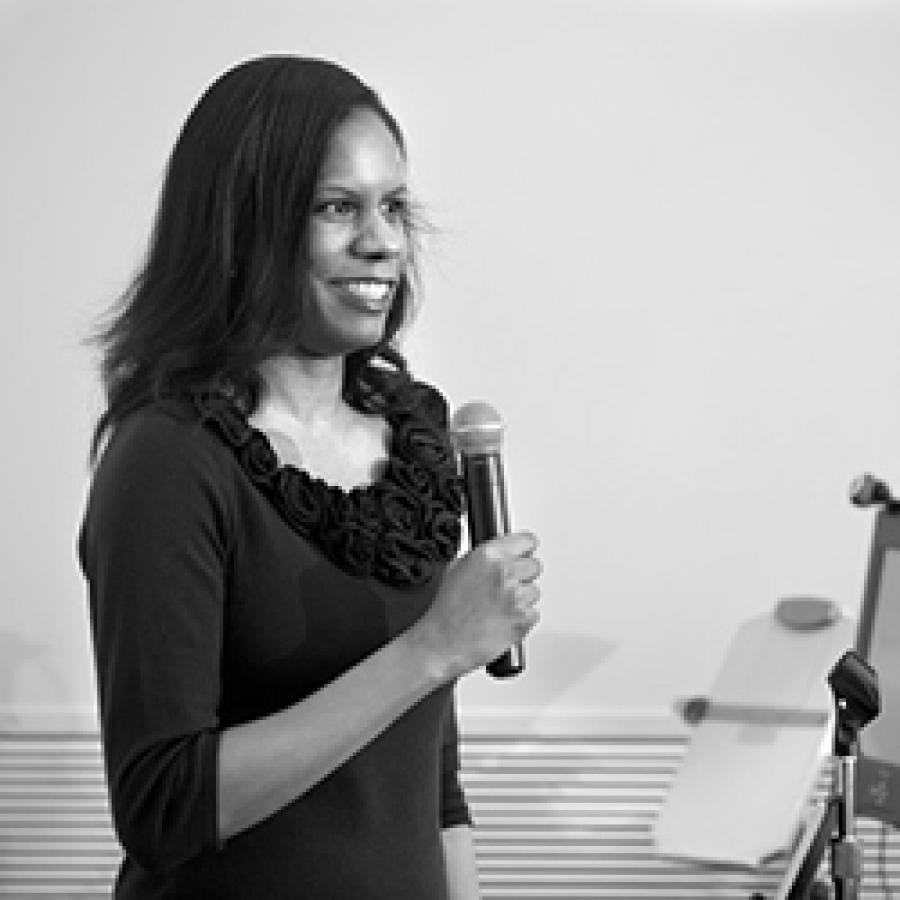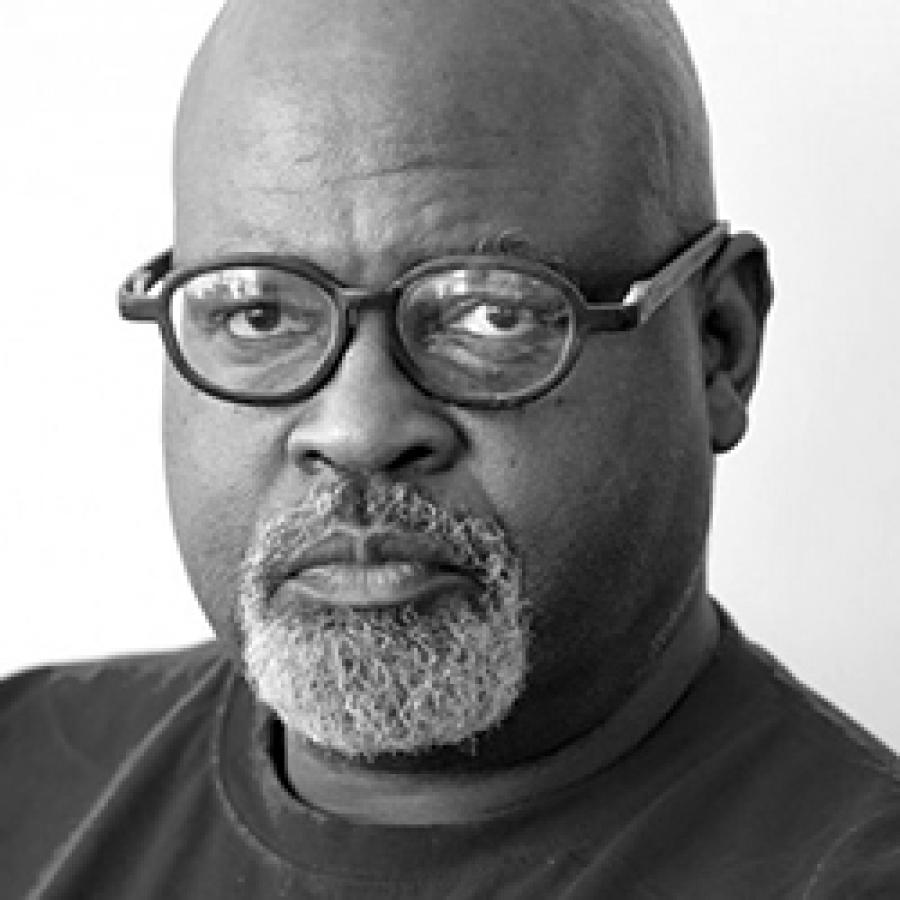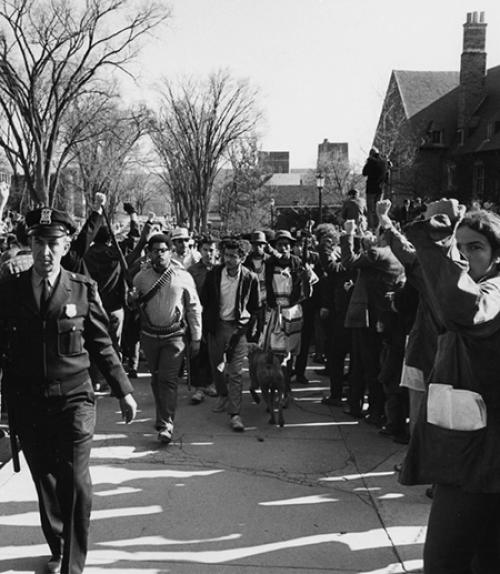On April 19, 1969, dozens of members of Cornell’s Afro-American Society and several Latino students occupied Willard Straight Hall for 36 hours to call attention to what they perceived as the university’s hostility toward students of color, its student judicial system and its slow progress in establishing an Africana studies program.
As Cornell recognizes the 50th anniversary of the occupation, dialogue around these important issues continues. Ezra offers two essays written by Cornellians who are among the many looking back on the occupation to explore its lessons, both broad and personal.
What teaching about the Straight occupation has taught me – and what it can teach everyone
In 2010 I began to develop the course The Willard Straight Occupation and the Legacy of the Black Student Movement because so many students I encountered, like me, were curious about the topic and about Cornell’s place in this history. I wanted us to be able to learn from the related archives and to draw on the occupation as a lens for thinking about the larger national black student movement and Cornell’s important role in shaping it – points that are powerfully illustrated in the landmark 2016 documentary film “Agents of Change,” directed by Frank Dawson ’72 and Abby Ginzberg ’71, which our class publicly screened at Cornell in 2017.The course was offered in the spring of 2017 and 2018 and drew a diverse group, including multiple student leaders on campus (it likely will be offered again this coming fall). It promoted nuanced and thoughtful reflection on the April 1969 Willard Straight Hall occupation through various accounts, texts and media, and related it to the long history of higher education in the nation and at Cornell.
We began by talking about the history of slavery in shaping and financing colleges and universities, a perspective that unsettles and confronts typical idealizations and mythic narratives of higher education. The course then contextualized contemporary movements to challenge and remove racist symbols on campuses – as witnessed at Harvard, Princeton and Columbia and other colleges and universities – problematic symbols that link to the extent of that background and history.
Given its founding just as slavery ended, Cornell was not shadowed by slavery in the same way as its Ivy League peers.
In the openness of its founding vision, Cornell is unmatched. It has been in an optimum position to lead the way in welcoming people who are different, though such opportunities were not always maximized or embraced over the years. The recent struggle to rename Cornell Plantations, along with the history of the Willard Straight occupation, underscores that, over time, Cornell has also had ongoing challenges and been a site where some students, including blacks, have felt excluded and alienated.
Carol Kammen’s book “Part and Apart: The Black Experience at Cornell, 1865-1945,” helped us to put the sexist and racist treatment of black women in dormitories on campus in the 1960s (another factor on the road to the Willard Straight occupation) in perspective, revealing their maltreatment and marginalization and their targeting by discriminatory housing policies earlier in the 20th century.
I keep giving away my copies of Kammen’s beautiful book, which I believe every Cornellian should read.
We also read works that explore how university administrators have been handling racial incidents on U.S. campuses. By focusing more effort on protecting the perpetrators in such cases than creating a safe climate for minority students – and by allowing time to pass without implementing changes that might prevent the recurrence of such incidents – they perpetuate a campus climate hostile to diversity. We also discussed scenarios that conflate free speech and hate speech.
My students have made stellar oral presentations and developed a range of outstanding projects, including two short films on the black women’s living co-operative Wanawake Wa Wari House, and on topics such as allyship, the experiences of black athletes on campus, the 2015 Trillium occupation, residential experiences of blacks on campus, and food insecurity in Ithaca.
Teaching this course was one of the most inspiring and fulfilling pedagogical experiences that I have ever had. As someone who was born and raised in Montgomery, Alabama, the birthplace of the civil rights movement, and who was unfamiliar with the story of the occupation before coming to Cornell, I find it tapped into my ongoing commitment to civil and human rights. It viscerally reminded me that the black student movement in which some people risked or lost their lives has made a way for me to do what I do as a scholar today. I recognize their sacrifices and never take them for granted.
The Willard Straight occupation is an important and indispensable history to think with and through. Remembering the occupation, now marking its 50th anniversary, will help us to never forget that our campus reflects the nation and world in which we live, and that prioritizing and realizing Cornell’s highest ideals is also inextricably linked to bringing about a better nation and world.
Riché Richardson is an associate professor of African-American literature in the Africana Studies and Research Center.
After Willard Straight occupation, a life dedicated to building change
By Edward L. Whitfield
After 50 years, some of the events of the spring of 1969 at Cornell are a blur, an impression, a color, or a feeling. But there are things about those days and my life since then that are crystal clear.In April of 1969, I was a 19-year-old sophomore from Little Rock who wanted to change the world. I knew that the conditions in the black communities of the United States and similar marginalized communities around the world were not what they needed to be to meet the needs of the people I cared about. I was also confident that change was possible. I held little hope that my own personal success would be much of a factor in changing the world but was convinced that my work could be.
This was the basis for dedicating my life’s efforts to social struggle rather than personal achievement. When I left school that spring, I went back to Arkansas to do community organizing. I was asked by Haywood Burns, a noted civil rights lawyer with the NAACP’s legal defense fund, whether I wanted to make a big production out of my upcoming trial for first-degree criminal trespass (related to the Willard Straight Hall occupation), or did I have more important things to do?
I opted for the latter and did not return to Ithaca for the trial. I did voter registration and voter education work in the delta region of eastern Arkansas where, 50 years earlier in 1919, there was a massacre of black residents in the small city of Elaine for the crime of organizing for fair compensation as tenant farmers.
I was an AmeriCorps VISTA trainer, helping to coordinate that work, and I also wrote a piece for the Arkansas Council on Human Relations on the limitations of voter education work (in the absence of transforming the election process) to getting more viable candidates with better platforms to run for office. I was serious then – and now – about transformative politics and transformative economics.
I returned to Cornell in the fall of 1970 to enter the newly formed Africana Studies Program but realized that what we needed was very difficult to attain within the confines of the academy. Where I had wanted to see a program focus its energies on identifying contemporary problems and creating viable transformative solutions, I found that the pressures on the university, and therefore on the Africana Studies Program, to remain within existing political and economic structures made that radical project more difficult than we had imagined.
It became important to those devoted to Cornell’s institutional development to fight for the legitimacy of Africana Studies within the academy rather than extend its reach out into the marginalized communities that we had hoped it would significantly affect. My naïve understanding of what was possible was confronted by the pragmatic weight of hundreds of years of academic existence in service to the status quo.
I left during the winter of 1970 to go to North Carolina to teach at Malcolm X Liberation University, a school with little money and some ideological confusion, holding on to a dream of freedom that could not take deep roots within the hard soil of the existing academic institutions.
I remain in North Carolina but do not regret what we fought for in 1969. Our struggle, our tactics and the outcome represented a step forward that I can be proud of my part in. I also don’t regret leaving to be closer to the communities that I care about, many of whom don’t even know, given the lack of impact on their lives, that there are such things as black studies programs.
I work with people across the country to develop democratic financial structures at a grassroots level to help return wealth extracted and exploited from our communities over the centuries. I am also continuing to study and write in clear language, intended to be comprehensible within marginalized communities, about the nature of this economic and social system and how we can build pockets of freedom within it even before it collapses from its internal contradictions.
I wish success to those who remained and continue to look for ways to make their presence relevant. May we all work to build the world that is necessary and possible.
Edward L. Whitfield ’70 is the co-founder and co-managing director of the Fund for Democratic Communities and chairs the board of the Southern Reparations Loan Fund. At Cornell, he was chairman of Cornell’s Afro-American Society and a key player in the April 1969 Willard Straight Hall occupation.







